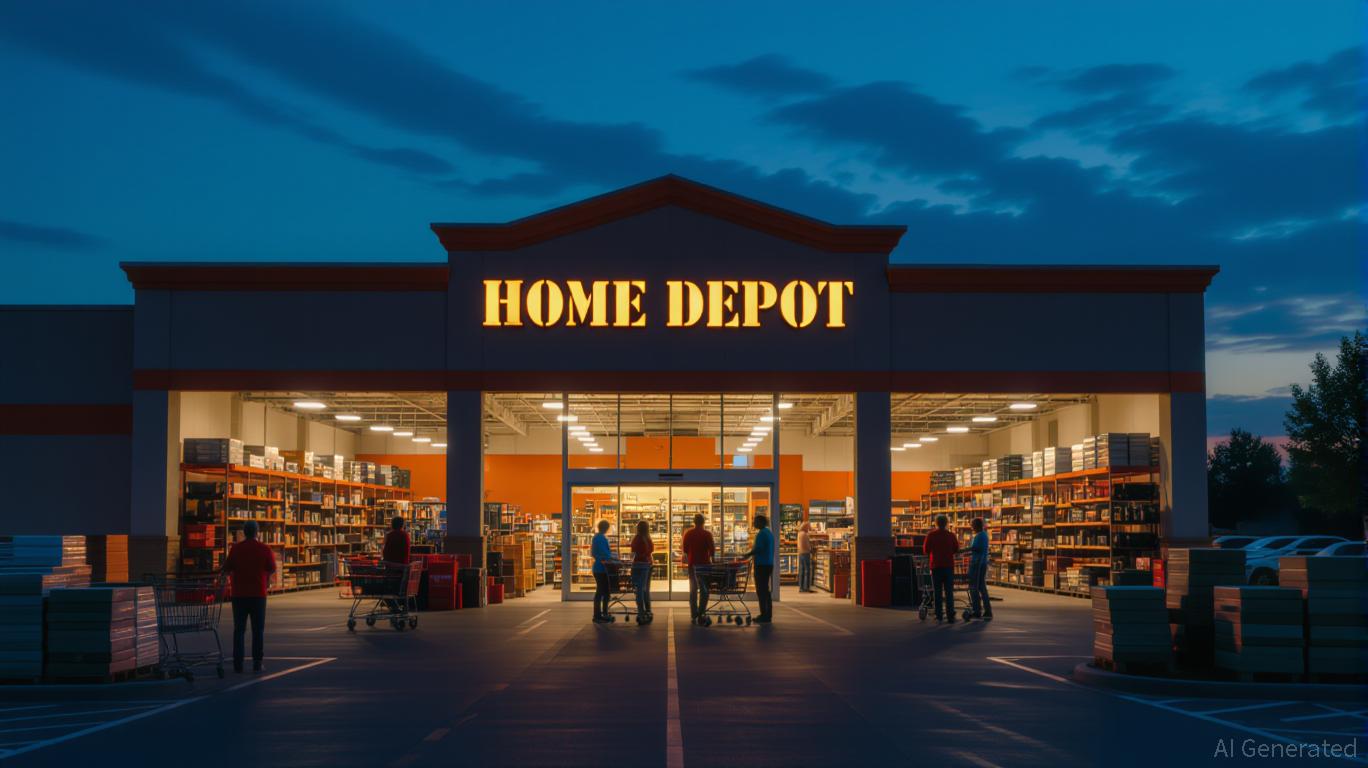
Home Depot, the behemoth of the home improvement retail sector, has long been a barometer for the health of the U.S. economy. In 2025, as inflation, geopolitical tensions, and fiscal uncertainty loom large, the company’s ability to navigate these headwinds while maintaining profitability and investor confidence has become a case study in strategic resilience. Despite warnings from its co-founders about the fragility of the U.S. economic model, Wall Street remains bullish, betting on Home Depot’s operational agility and market dominance.
Strategic Adaptation: Diversification and Digital Innovation
Home Depot’s recent performance underscores its proactive approach to mitigating macroeconomic risks. The company has diversified its supplier base to avoid overreliance on any single country, ensuring no nation accounts for more than 10% of its purchases. This strategy, honed over a decade, has shielded it from tariff-driven inflation and supply chain disruptions. For instance, in Q1 2025, Home Depot increased inventory by $3.3 billion to $25.8 billion, a calculated move to maintain high in-stock levels during peak demand seasons. This contrasts sharply with competitors like Walmart, which have resorted to broad price hikes amid similar pressures.
Digital innovation further bolsters Home Depot’s resilience. The AI-powered Magic Apron tool, which offers 24/7 project guidance and product recommendations, has enhanced customer engagement while reducing reliance on in-store staff. This not only cuts labor costs but also drives repeat business, a critical advantage in an era of rising operational expenses. Analysts note that such tools have helped Home Depot maintain a 2.1% increase in customer transactions during Q4 2024, even as larger remodeling projects faltered due to high mortgage rates.
Wall Street’s Optimism: A Tale of Two Segments
Wall Street’s optimism hinges on Home Depot’s dual focus on DIY consumers and professional (Pro) contractors. While the DIY segment has softened—due to high interest rates and cautious consumer spending—the Pro segment remains a fortress of stability. Professional contractors, driven by the aging U.S. housing stock, account for 40% of Home Depot’s sales and are less sensitive to macroeconomic shifts. The acquisition of SRS Distribution in 2023 has further solidified this segment, providing enhanced service for trade professionals and reinforcing Home Depot’s market leadership.
Financial metrics back this duality. In Q1 2025, Pro sales grew 9.4% year-over-year, while DIY sales declined 0.3%. Analysts project Q2 2025 adjusted earnings per share (EPS) of $4.72, a 1.1% increase from the prior year, with revenue expected to rise 5.2% to $45.42 billion. The company’s forward P/E ratio of 25.81X, though above the industry average, reflects confidence in its ability to sustain growth. Historically, Home Depot’s earnings releases have shown a mixed impact on its stock price. While the 3-day and 30-day average returns have been negative (-0.36% and -1.30%, respectively), the 10-day period has seen a slight positive return of 0.05%. The 10-day win rate stands at 50%, suggesting that while short-term volatility is common, the stock has a moderate chance of positive movement in the medium term following earnings announcements.
Founder Skepticism vs. Institutional Confidence
Home Depot’s co-founders, Ken Langone and Bernie Marcus, have voiced stark warnings about the U.S. economic trajectory. Langone has criticized the $36.2 trillion national debt and warned of the risks of unchecked fiscal expansion, while Marcus has lamented the impact of high inflation and regulatory burdens on small businesses. Their concerns are not unfounded: the U.S. housing market remains constrained by elevated mortgage rates, and retail sales data suggest a cooling consumer appetite for big-ticket projects.
Yet, Wall Street’s optimism persists. Analysts argue that Home Depot’s structural advantages—such as its fixed-rate debt model, which insulates it from rising interest costs, and its robust dividend growth streak (152 consecutive quarters)—position it to outperform peers. Piper Sandler and Truist Securities have both raised price targets for HD stock, citing the company’s ability to absorb cost pressures without eroding margins. Options traders, meanwhile, anticipate a 4.1% move in Home Depot’s stock post-earnings, reflecting high conviction in its strategic execution.
The Path Forward: Balancing Risks and Rewards
For investors, the key lies in balancing Home Depot’s long-term strengths with near-term uncertainties. While the company’s Pro segment and digital tools provide a buffer against economic volatility, risks remain. A prolonged housing market slowdown or a spike in interest rates could dampen DIY demand further. Additionally, geopolitical tensions—such as the Iran situation—could disrupt supply chains, testing the limits of Home Depot’s diversification strategy.
However, the company’s disciplined capital allocation and focus on shareholder returns offer a compelling case for investment. With a 2.66% dividend yield and a share repurchase program, Home Depot continues to reward investors even as it reinvests in growth initiatives. The average brokerage recommendation of 1.61 (a “Strong Buy”) underscores this sentiment, though the Zacks Rank #3 (Hold) serves as a reminder to monitor earnings revisions closely.
Conclusion: A Fortress in a Shifting Landscape
Home Depot’s resilience in 2025 is a testament to its strategic foresight and operational discipline. While the co-founders’ skepticism highlights valid macroeconomic risks, the company’s ability to adapt—through supplier diversification, digital innovation, and a focus on resilient Pro demand—has insulated it from the worst of the headwinds. For investors, the challenge is to weigh these strengths against the broader economic uncertainties. In a world where fiscal and geopolitical risks are ever-present, Home Depot’s fortress-like business model offers a compelling case for cautious optimism.
“””
